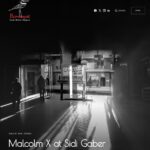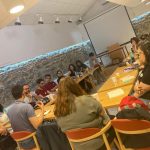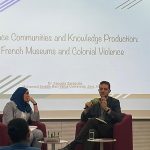Read the full piece in Jadaliyya
Republished in Ahram Online
On 24 January 2011 – a day before the arc of Egyptian history would be altered – the film Microphone was screened. Microphone documents Alexandria’s pre-revolution underground scene of artists and musicians fighting a passive oppression that suffocates their ability to nurture their creativity. Khaled (played byKhaled Abol Naga), who has returned to Egypt from the US, wishes to aid the youth by providing them with a venue and funding for nurturing their talents. In one scene, Khaled is conversing with an official at the state’s cultural office to request support for his project. The dialogue proceeds as follows:
Official: What is this graffiti? Is our role to pollute the walls or to clean them?
Khaled: “Graffiti is an art, the whole world acknowledges it. We have to encourage the youth in their pursuits”
Official: “Is this not transgression against people and properties, and visual pollution?
Khaled: “What about the campaign posters littered around the country’s walls, isn’t that visual pollution as well?”
Official: “No, that is something and this is something else. Election campaigning is part of our democratic process”
To the dumbfound look of Khaled who – frustrated enough by red tape – now is expected to digest a bureaucrat’s talk of “democracy” in Hosni Mubarak’s Egypt
Prior to the revolution, Alexandria’s walls were largely Soviet-esqe and barren. Artists who did attempt to paint the walls, like Aya Tarek (featured in the film) and Amr Ali (not the author of this piece), were often stopped by the police or reported by onlookers suspicious of their novel activity. Fatma Hendawy, a curator who started on the street scene before the revolution, notes that one way to circumvent these obstacles was to go through the Goethe Institute to use its diplomatic muscle to define joint German-Egyptian art projects. Yet as Fatma laments, such institutes inadvertently stump your creativity in order to cater to their bilateral agendas.
In the months following the 2011 Revolution, I took to cataloguing the artwork that blossomed and inspired me to believe that the public space was gradually being reclaimed by society. I am no artist; however, I take the position of the “public” and write on the art in the context of the socio-political dynamics and nuances that influence societal perceptions of street art. Specifically, this essay attempts to tell the story of the past two years purely through artwork from the streets of Alexandria. For Cairo, I highly recommend the large collection of Suzee Morayef who, on her blog, offers great analyses on street art that is prolific through the capital’s streets. Also Mona Abaza, professor of sociology at the American University in Cairo, has penned brilliant pieces on the artistic narration of the revolution.
Continue to read full article at Jadaliyya







